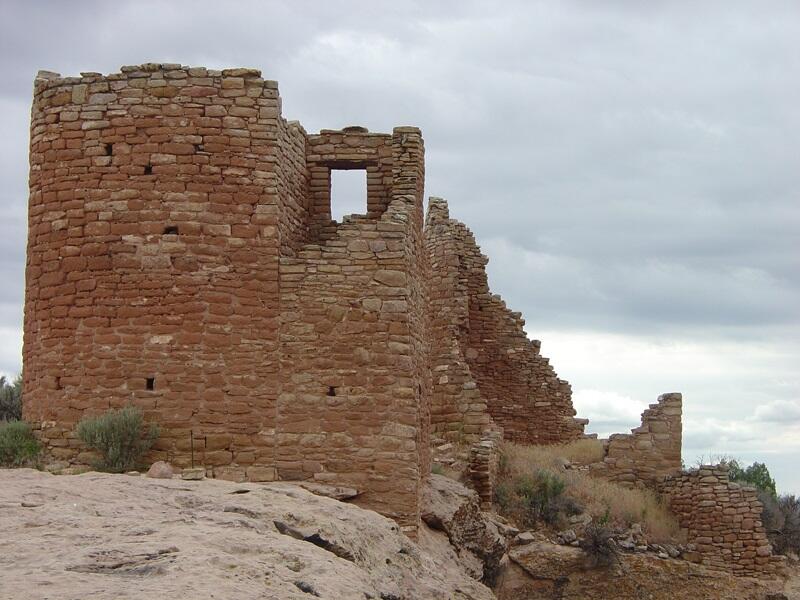Hovenweep - Hovenweep Castle

Detailed Description
View of Hovenweep Castle. Archeological evidence suggests that humans utilized the Cajon Mesa region as far back as 10,000 years ago. Groups of early hunting and gathering peoples first followed large game in the region. About A.D. 900, year round agricultural communities developed on the mesa. At first, people occupied shelters in natural shallow caves, then they constructed pithouses in many of the region's canyons or mesa tops near water resources. In the thirteenth century, the ancestral Puebloan inhabitants of the mesa began to build a series of masonry villages and free standing towers, many of which were so well-constructed that they remain standing today. Hovenweep Castle is one of the most famous structures in the villages of Hovenweep National Monument —a multi-story stone masonry structure constructed by Ancestral Puebloans. Based on the tree ring record, one of the logs used in the construction was cut down in A.D. 1277. This would make the Castle one of the youngest structures in the region. Most of the masonry structures were constructed between A.D. 1230 and 1275, about the time that similar construction was taking place at Mesa Verde. At its peak, the area may have supported as many as 2500 people, but perhaps only about 300 people lived in the immediate vicinity of upper Little Ruin Canyon. By about A.D. 1300, the Ancestral Puebloans had left the area, possibly owing to a prolonged drought.
Sources/Usage
Public Domain.

